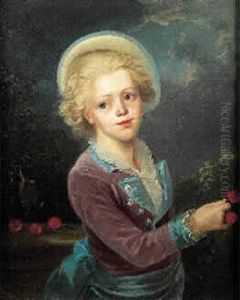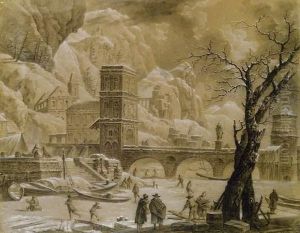Charles Louis Franc. Le Carpentier Paintings
Charles Louis François Le Carpentier was a French artist born in 1820 in Paris, France. Coming from a period that straddled the late Romantic era and the burgeoning Impressionist movement, Le Carpentier's work, however, remained distinct in its blend of traditional techniques and a sensitivity toward light and atmosphere that hinted at the changing tastes of the art world of his time.
Le Carpentier's education and early career were deeply rooted in the academic art traditions of France, studying under prominent teachers of the time. Despite the academic start, his works gradually began to reflect a more personal, perhaps even idyllic, interpretation of his subjects, whether they were landscapes, portraits, or scenes of daily life. Not much is known about his personal life, which has led to a focus primarily on his contributions to French art in discussions of his legacy.
Throughout his career, Le Carpentier exhibited at the prestigious Paris Salon, a critical venue for artists seeking recognition and patronage in the 19th century. His works received commendation for their refined technique and composition, qualities that kept him in favor with the Salon's jury and the art-buying public. Despite the acclaim, Le Carpentier never aligned himself with any particular art movement of the time, such as Impressionism, which gained popularity during his middle and later years. Instead, he maintained a classical approach to painting, emphasizing clarity, harmony, and the beauty of the subject matter.
Charles Louis François Le Carpentier's death in 1903 marked the end of a career that spanned much of the 19th century, a period of significant transformation in the art world. His body of work remains a testament to the enduring appeal of classical art principles even as the world around him embraced change. Today, his paintings can be found in various French museums and collections around the world, appreciated for their technical skill and the timeless beauty they capture.

